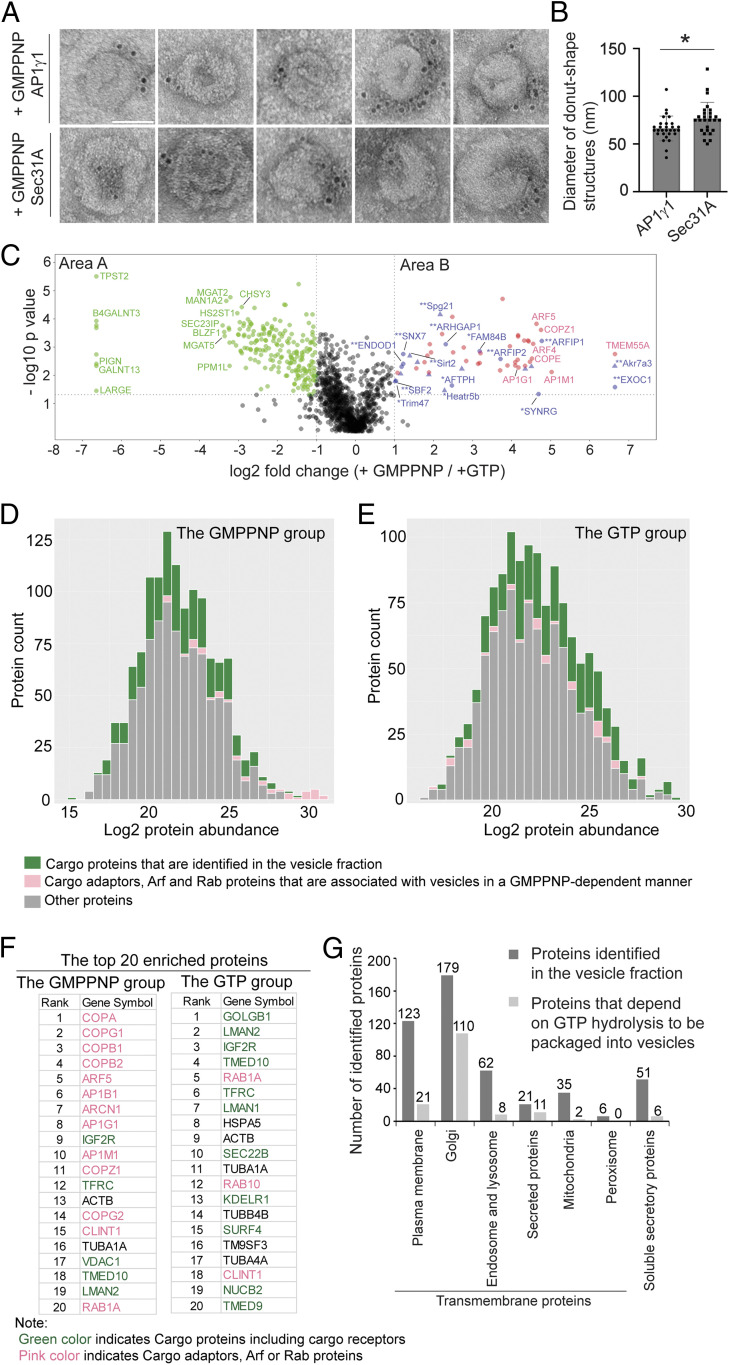Fig. 2.
Identification of cytosolic proteins that are associated with vesicles in a GTP-dependent manner and cargo proteins that are packaged into vesicles in a GTP-hydrolysis–dependent manner. (A) Immunogold TEM was performed using AP1γ1 and Sec31A antibodies to label the donut shape structures produced in the presence of GMPPNP. (Scale bar, 50 nm.) (B) Quantification of the diameter of the donut shape structures labeled by antibodies against AP1γ1 and Sec31A (mean ± SD *P < 0.05, from two biological repeats). (C) The vesicle formation assay was performed in the presence of GTP or GMPPNP. The isolated vesicles in each experimental group were resuspended in RapiGest SF surfactant. The proteins in the vesicle fractions were trypsin digested and analyzed by label-free mass spectrometry. A total of 1,285 proteins were identified in both experimental groups. The log2 ratio of the abundance of each identified protein in the vesicles prepared in the presence of GMPPNP over that in the vesicles prepared in the presence of GTP was plotted on the x axis and the –log10 P value of the difference was plotted on the y axis. (D and E) Histogram of the log2 abundance of the human proteins identified in the vesicle fraction produced in the presence of GMPPNP (D) or GTP (E). (F) The list of the top 20 abundant human proteins in the GMPPNP group or in the GTP group. (G) Number of proteins categorized based on predictions from Uniprot.

